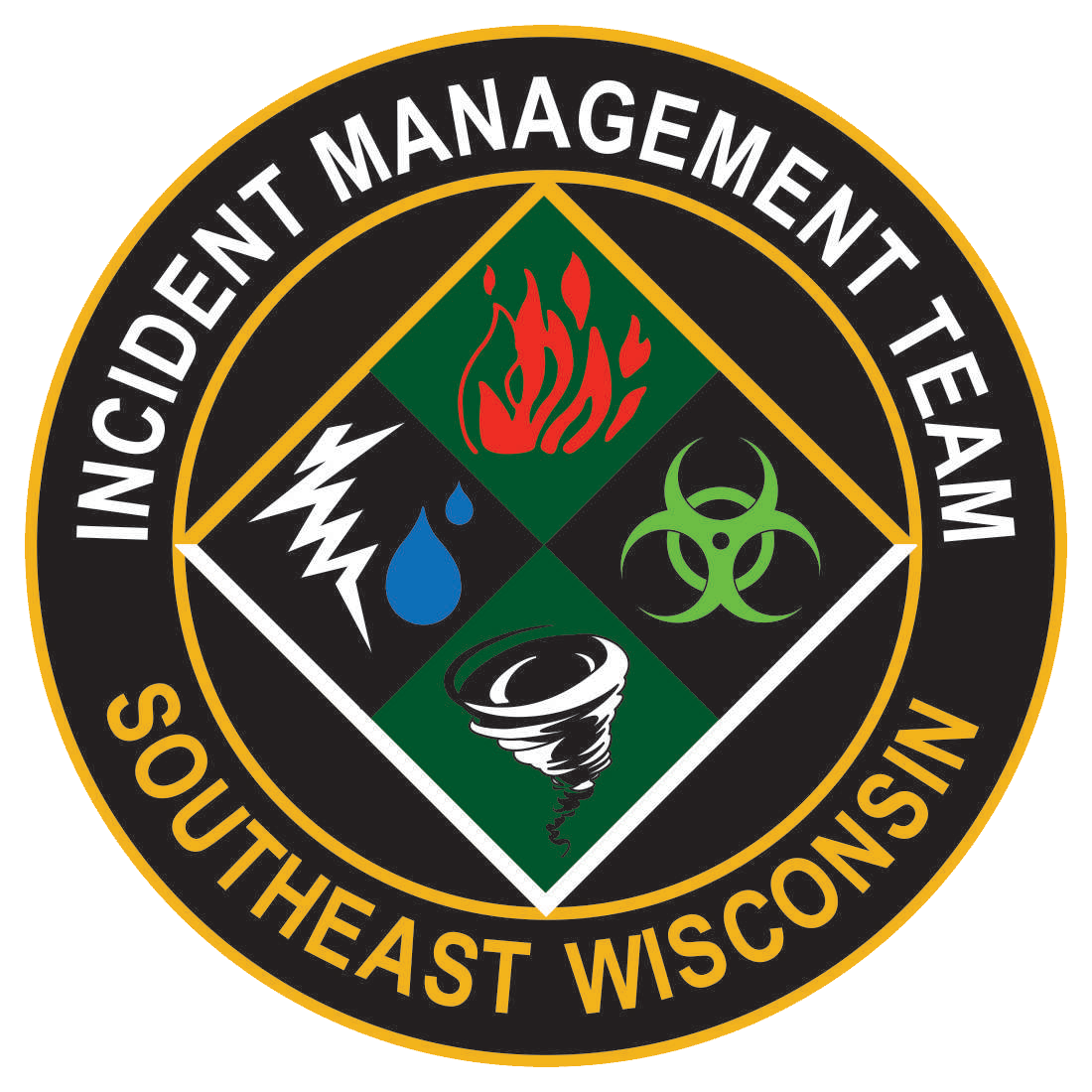The Southeast Wisconsin Incident Management Team provides emergency or event assistance and support, using the Incident Command System.
Tasks
Some of the tasks with which the SEW IMT can Provide assistance.
Running incident check-in or the Staging Area:
Damage Assessment:
Establishing and maintaining the Incident Command System:
- The Incident Command System (ICS) is the management linchpin of all of our operations. FEMA mandates the use of the ICS and public safety entities across the country adopted the ICS. From the earliest stages of an incident or event, our team assists in organizing and accounting for resources and personnel using the ICS.
Assisting with command, operations, logistics, planning or finance/administration, Public Information, Liaison or Safety functions:
- These are the major positions and functions of the Incident Command System that are used during a major or long-term event. Our team members have the specialized training and experience that allows them to facilitate these functions as requested by the Incident Commander. Team members can assist local responders in these positions or fill them if needed.
Staging Area Management:
- When managing large incidents or events, Incident Commanders often struggle to utilize responding resources effectively due to the large numbers of personnel and equipment clogging the scene. Quickly establishing a staging area for these resources, away from the incident scene, clears up the congestion. Our team has the experience to establish and manage the staging area function for the incident commander.
Building or updating Incident Action Plans(IAP):
- An integral part of the ICS is the method by which incident planning takes place otherwise known as the “Incident Action Planning process.” This process is an organized series of meetings and actions designed to make decisions and create a multi-page document called an Incident Action Plan. This plan uses the Incident Commander to organize and manage the incident in the next operational period. Our team is expert in the development, implementation, and evaluation of the Incident Action Plan (IAP).
Managing personnel accountability and tracking:
- During long-term or large-scale events, accounting for hundreds of requested, arriving, deployed and departing personnel and equipment is a difficult task. Our team has the technology and experience to manage personnel accountability through check-in or check-out at the staging area for the incident commander, allowing him/her to focus on other more urgent tasks.
Managing Volunteers or Donations:
- Some area-wide disasters like floods and tornados engender a significant outpouring of citizen volunteers and donated goods for the victims or for the responders. As an incident extends in duration, the number of volunteers and the amount of donations increases. Managing these good-hearted people and their donations can be daunting for an Incident Commander without help. Our team can assist in managing these tasks.
Facilitate on-scene communications for multiple agencies:
- Lack of effective or efficient communications during a disaster or large-scale event response is usually the number one area of concern. Facilitating communications between multiple agencies from multiple levels of government, non-governmental organizations and the private sector using multiple methods of communication is a complex issue to resolve. Our team has communications specialists from technicians to communications unit leaders who are expert at solving these issues.
Establishing or facilitating the Public Information function or a Joint Information Center:
- The public demands quick, accurate and timely messaging from officials in charge of major events or disasters. Without highly trained personnel facilitating a robust public information function, public confidence in their officials will erode. In larger events, a Joint Information Center may be needed, staffed by public information personnel. Our team members are experienced in facilitating both of these critical functions during major incidents.
